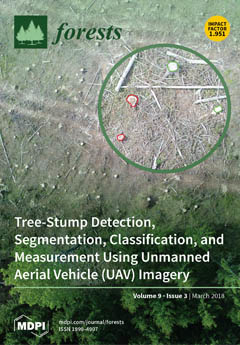1
School of Forest Resources & Environmental Science, Michigan Technological University, Houghton, MI 49931, USA
2
Daniel B. Warnell School of Forestry and Natural Resources, University of Georgia, Athens, GA 30602, USA
3
Department of Earth, Environment, & Geosciences, Northern Michigan University, Marquette, MI 49855, USA
4
Hawkesbury Institute for the Environment, Western Sydney University, Richmond, NSW 2753, Australia
5
Lake Superior National Estuarine Research Reserve, University of Wisconsin-Superior, Superior, WI 54880, USA
6
USDA (United States Department of Agriculture) Forest Service, Northern Research Station, Grand Rapids, MN, 55744, USA
7
Department of Natural Resource Sciences, Thompson Rivers University, Kamloops, BC V2C 0C8, Canada
8
USDA (United States Department of Agriculture) Forest Service, Pacific Southwest Research Station, Arcata, CA 95521, USA
Abstract
Emerald ash borer (EAB) continues to spread across North America, infesting native ash trees and changing the forested landscape. Black ash wetland forests are severely affected by EAB. As black ash wetland forests provide integral ecosystem services, alternative approaches to maintain forest cover
[...] Read more.
Emerald ash borer (EAB) continues to spread across North America, infesting native ash trees and changing the forested landscape. Black ash wetland forests are severely affected by EAB. As black ash wetland forests provide integral ecosystem services, alternative approaches to maintain forest cover on the landscape are needed. We implemented simulated EAB infestations in depressional black ash wetlands in the Ottawa National Forest in Michigan to mimic the short-term and long-term effects of EAB. These wetlands were planted with 10 alternative tree species in 2013. Based on initial results in the Michigan sites, a riparian corridor in the Superior Municipal Forest in Wisconsin was planted with three alternative tree species in 2015. Results across both locations indicate that silver maple (
Acer saccharinum L.), red maple (
Acer rubrum L.), American elm (
Ulmus americana L.), and northern white cedar (
Thuja occidentalis L.) are viable alternative species to plant in black ash-dominated wetlands. Additionally, selectively planting on natural or created hummocks resulted in two times greater survival than in adjacent lowland sites, and this suggests that planting should be implemented with microsite selection or creation as a primary control. Regional landowners and forest managers can use these results to help mitigate the canopy and structure losses from EAB and maintain forest cover and hydrologic function in black ash-dominated wetlands after infestation.
Full article





